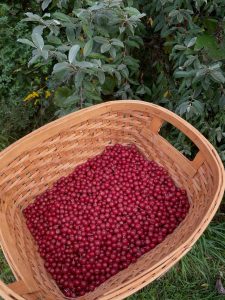An Introduction to Oregano:
Oregano is a member of the mint family known for its culinary and medicinal uses. The most common species is Origanum vulgare. It is one of the most commonly sought after herbs around the world. A perennial herbaceous plant, it grows up to around 2.5 feet in height with purple flowers. They derived the word oregano itself from the Greek language, which roughly translated to the “Joy of the mountain”. An all-rounder for herbs, it gives a fragrant kick to whatever food you put it in, though savory is the way to go.

Distribution and History of Oregano:
The herb oregano came from Greece originally but held a powerful appeal in Italian cuisine and culture (even today); we can see oregano in many Mediterranean and Italian dishes such as pizza, pastas. You could even say that Italian cuisine and oregano are inseparable. You can find oregano in various Mediterranean countries, though a lot of it is grown in parts of Greece. In olden times they used it as a medical aid, as claimed by some in the form of ointment or cream to treat various ailments. Even to this day it is used to treat problems like fever, coughs and sore throats plus other medical concerns.
Cultivation of Oregano:
To plant oregano, get some soil and make sure it should be well drained. The fact that oregano loves sunshine is very important to remember. The more sun exposure it has, the more “kick” it will develop for flavor content. Keep the plants around a foot apart when planting and make sure the plant has enough space to grow as it can spread out. Water, but only when you know that the soil is getting dry because giving oregano too much water will cause the plant more harm than good. Besides that, to harvest oregano just cut a part of the plant when it grows over 9 inches (22.86 centimeters) and it will regrow enough.
Varieties of Oregano:
Various cultivars or variants of oregano are present with differences in leaf and flower shape plus color. Examples are a dwarf or small cultivar called “Nana” and various other Greek cultivars. There are other plants with the same name but are not authentic forms of oregano, we call such plants “Mexican” and “Cuban” oregano, respectively.
Benefits of Oregano:
There are a lot of benefits with Oregano including not only medical but olfactory too:
- Provides a decent temporary treatment alternative for wounds:
All scratched up and hurt? Oregano has you covered. Just grind it into a make-shift healing ointment. - Can relieve digestive ailments:
The oil derived from oregano can aid in digestion, though concrete evidence is not present to support this claim. People can drink it in tea form to ease themselves from any bowel related discomfort. - Oregano combats cancer:
The essential oil derived from oregano can stop the growth of most cancer cells. It also has the potential to kill said cancer cells given the research and time. - Useful against inflammation:
Oregano combats inflammation as a natural alternative. - It is an Anti-Microbial agent:
It can fight various fungi, bacteria and even viruses.
Dosage and Safety:
Though there is not much research is present for dosage and safety in relation to Oregano. Not much documented cases of people being adversely affected by its shape or form are present. We should take it with relative care by those individuals more prone to allergies or have digestive problems. If you don’t take care Skin based allergies can also flare up by applying oregano.
Conclusion:
Oregano brings a plethora of flavors to any dish you would sprinkle it on by giving the dish an aromatic “signature”. Fresh oregano is scarce, and the dried up variety is openly available almost anywhere. Just use dried up oregano sparingly because of its higher potency as compared to fresh oregano. You can’t go wrong with a hint of oregano in just about every Italian or Mediterranean dish. In conclusion, oregano like its other Mediterranean herby brethren is a must have for your assemblage of spice and herbs.
—————————————————————————————————————-
| Written By Muhammad Waleed Raja,
~ Waleed is an avid graphic designer, animator, illustrator as well as freelance writer with an affinity towards nature, art, technology and everything that encompasses gaming along with pop-culture added into the mix. To learn more about him look up his profile on upwork.com ~
—————————————————————————————————————-
Many of our readers find that subscribing to Eat The Planet is the best way to make sure they don't miss any of our valuable information about wild edibles.
See our privacy policy for more information about ads on this site






